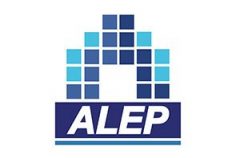The second reading of the ‘Homes (Fitness for Human Habitation and Liability for Housing Standards) Bill’ took place on 19th January. The Bill was introduced by Karen Buck MP and on 14 January the government announced that it would support it. The Bill will now be discussed by a select committee where amendments may well be made.
For now, a summary of the Bill as it currently stands:
Section 8 Landlord and Tenant Act 1985 will be replaced to provide for an implied covenant that the landlord (in England only) of a lease for a term of less than 7 years:
(a) that the dwelling is fit for human habitation at the time of the grant or otherwise created or, if later, at the beginning of the term of the lease,
and,
(b) will remain fit for human habitation during the term of the lease.
This covenant will extend to “any part of the building in which the lessor has an estate or interest”. So in the case of flats the provisions will apply to the common areas and not just the specific flat or room demised. This is of course identical to the obligation many are familiar with in section 11(1A) Landlord and Tenant Act 1985.
The implied covenant will not require the landlord to:
(a) to carry out works or repairs for which the lessee is liable by virtue of –
(i) the duty of the lessee to use the premises in a tenant like manner, or
(ii) an express covenant of the lessee of substantially the same effect as that duty;
(b) to rebuild or reinstate the dwelling in the case of destruction or damage by fire, storm, flood or other inevitable accident,
(c) to keep in repair or maintain anything which the lessee is entitled to remove from the dwelling,
(d) to carry out works or repairs which, if carried out, would put the lessor in breach of any obligation imposed by any enactment;
(e) to carry out works or repairs requiring the consent of a superior landlord in circumstances where consent has not been obtained following reasonable endeavours to obtain it.
Importantly the landlord is also under no obligation if the unfitness is due to:
(a) the lessee’s own breach of covenant; or,
(b) disrepair which the lessor is not obliged to make good because of an exclusion or modification under section 12 Landlord and Tenant Act 1985.
Any provision in a lease to exclude or limit these obligations or penalise the tenant where they attempt to enforce them will be invalid.
Section 10 of the L&TA 1985 will also be amended so that the list of matters to be considered when assessing fitness will include the 29 hazard profiles used by the HHSRS. However, unlike the HHSRS, which assesses properties based on a notional occupier, fitness is assessed based on the actual occupier. So, for example, when assessing a stairway under the HHSRS it would not be relevant when considering whether it was a hazard that the property was occupied entirely by healthy young students. The student occupancy would be relevant when considering fitness under this new section 10.
The provisions of the Act will only apply to all tenancies which are granted or renewed after its commencement date.
Comment
That isn’t a complete summary of the Bill but just an introduction to the main provisions. Once the Act is in force we will summarise all the changes and their likely effects. However, this is now very likely to become law and landlords and agents will need to consider whether their properties are going to meet the new standard and start taking steps now to ensure that they do so.

